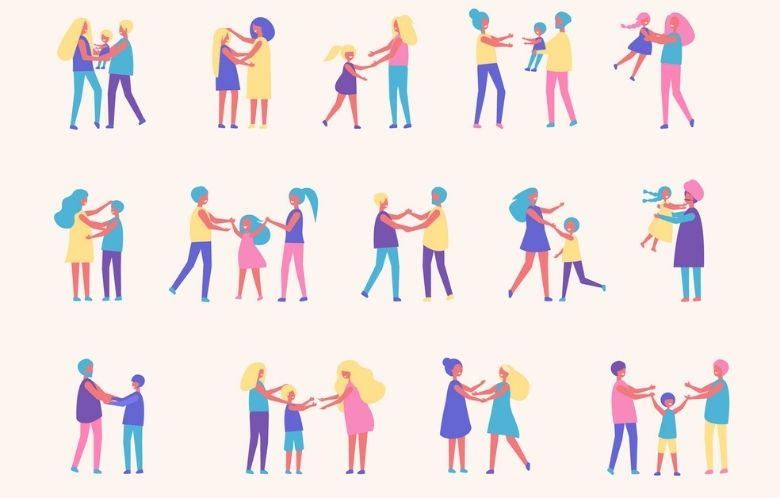When Lesléa Newman’s groundbreaking children’s book Heather Has Two Mommies was first published in 1989, it faced such fierce backlash that ALA ranked it the ninth most frequently challenged book of the 1990s. One Southern town made national news when people tried to have the title banned from local libraries and schools. After they were unsuccessful in their attempts, they placed advertisements in local newspapers asking citizens to vote against the construction of five new libraries if the book was to be included on the shelves.
That was my town. Although I was only a child, I remember the controversy swirling around Heather Has Two Mommies. I remember the shouts and whispers around the book as people insisted this would “legitimize” homosexuality or invite other “immoral” things into our schools and community. I also remember, as a child of divorced parents, how I thought it must be nice to have two of anything in a home.
Fast forward to 2010, and I was a single parent who had recently come out as a lesbian. Newman was scheduled to speak at my graduate school about the lasting impact of her book. I was embarrassed to say that despite being so familiar with the title, I had never read Heather Has Two Mommies, so I picked up a copy from the merchandise table to peruse before she spoke.
I was floored by what I read. The book begins with an introduction to Heather and her family, but then quickly transitions to following along on her first day of school. After their teacher, Ms. Molly, reads a book featuring a father, the children begin discussing their own families. She is inspired to have the children draw pictures of their families, and the children eagerly fill their pages with mommies, daddies, siblings, stepparents, grandparents, pets, and more. Ms. Molly then sums up the activity by saying:
It doesn’t matter how many mommies or how many daddies your family has…it doesn’t matter if your family has sisters or brothers or cousins or grandmas or grandpas or uncles or aunts. Each family is special. The most important thing about a family is that all people in it love each other.
I started crying in the audience. Crying from joy to see a family like the one I dreamed to one day have. Crying from sadness for the child, I was in that small Southern town who interacted with very few other children of divorced parents. Oh, how wonderful it would have been to read this message at a time when I was often reminded how not “normal” my own family was.
This experience inspired me to seek out books that featured all kinds of families, but especially those that might reflect the reality of my own situation. I knew that introducing my daughter to different perspectives could make it easier to not only feel secure in our family structure but understand other families in our community and beyond.
We talk about this concept often in NoveList, that of “windows and mirrors.” Educators use it to explain the idea that students need diverse perspectives to become fully aware of the world. Windows provide students a view into someone else’s experience, while mirrors provide a reflection of someone’s own culture. As Danielle Borasky puts simply in “Finding windows and mirrors in a world with walls,” the hope is that students become more understanding, the more they understand others’ lives.
We know books are wonderful tools for giving readers of all ages these windows and mirrors. Even after years of reading Newman’s Mommy, Mama, and Me to my children, they still proudly point out *every single time* that the family has two mommies, just like ours. That’s why the staff at NoveList work hard to provide a wealth of resources to find titles that feature all kinds of families.
Want to check it out for yourself? Here are a few ways:
- “Family” Recommended Reads Lists in the Teen, Ages 9-12, and Ages 0-8: These lists feature around 20 titles each and cover a range of families and family structures, including adoption, foster care, divorce, extended family, grandparents, and more.
- “All Kinds of Lives” Recommended Reads Lists for Ages 0-8: These picture books include families from the Latinx, Christian, Indigenous North American, South Asian, African American, Muslim, LGBTQIA, Multiracial, Immigrant, East Asian, and Disability communities.
- “Celebrating Identity” Theme: This new theme includes joyful narratives that celebrate all kinds of diversity, including those within families.
I often reflect on the power of that moment almost ten years ago, sitting in a hushed auditorium waiting for Newman to speak. My world cracked open in a way and I was completely undone by pieces of my past and present. How much affirmation the five-year-old me would have felt to read about other families where mommies and daddies lived apart. How much hope a newly out, 30-something me felt from seeing two mommies presented on the same footing as other “traditional” families.
Imagine how much seeing these stories can change the world for readers of all ages, but especially for our youngest ones who are still learning and growing and understanding. We hope these tools help you, your family, and your readers.

Download the flyer here.
Search "diverse families" in LibraryAware to make your own!
Jen Heuer Scott is a NoveList Consultant. She is currently reading The Four Profound Weaves by R.B. Lumberg.



